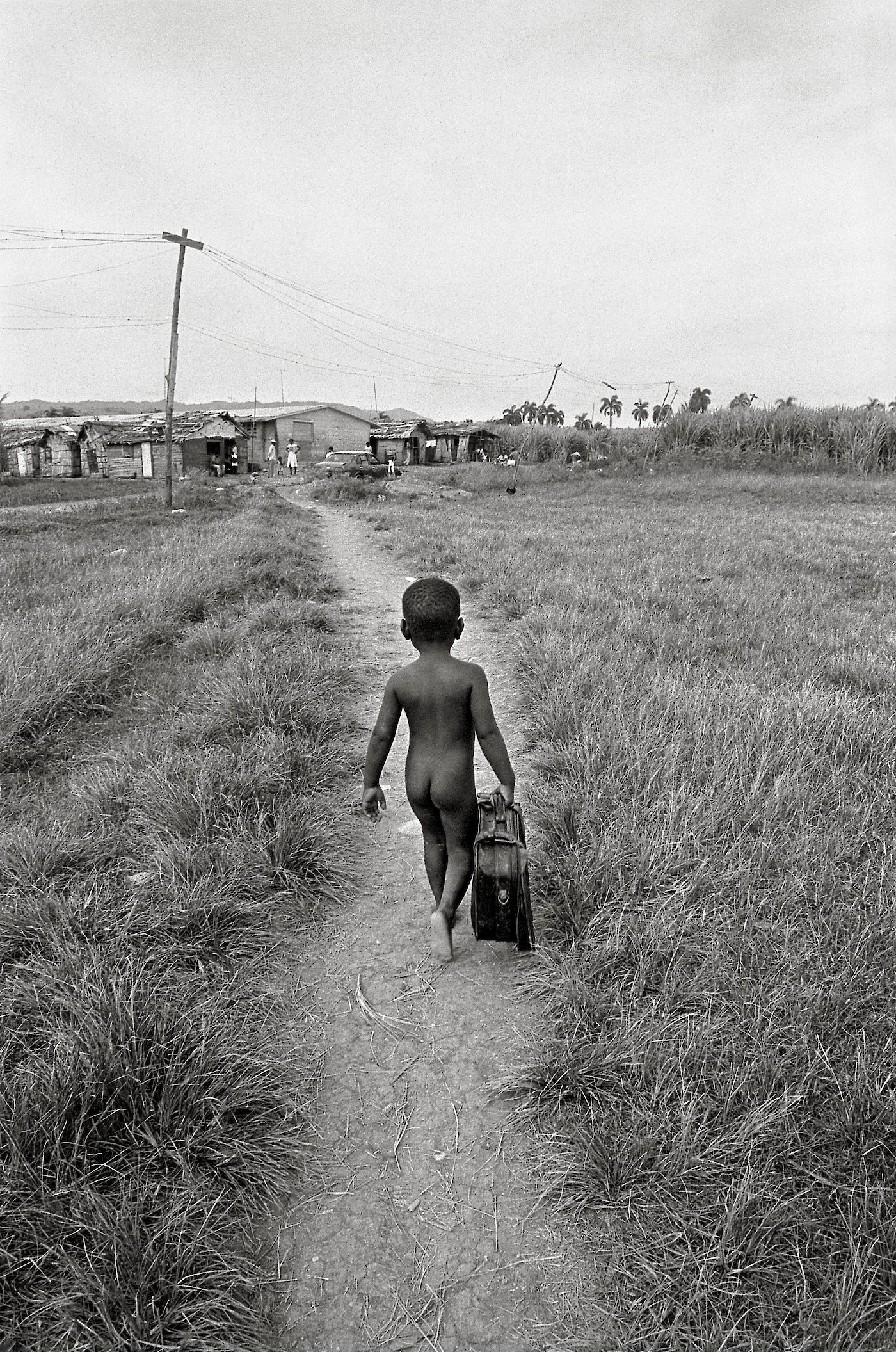The boy with the suitcase
34 / 50 by Juan Manuel Díaz Burgos, 1993

When looking at photographs, many viewers are used to those photographs being interpreted quite literally. Faced with this collective need, some photographers use their images to show things just as they are to the world. Others, however, show the universe by first introducing a meaning and placing it before the audience’s eyes. Juan Manuel Díaz Burgos prefers this second interpretation, thus going beyond what is shown explicitly.
His first project on American soil, Raíz de sueños (Root of dreams) took him to the Dominican Republic with the aim of giving a broad view of how life is in that country. This work focuses on a Batey, where sugarcane workers are housed. It was there that he met Enó. The combination of the road, the suitcase and the child ignited Juan Manuel’s imagination, and provided the image with a meaning that went beyond its literal reading: a reflection of his feelings about photography. During the following years he went back to the same place bringing toys that he distributed among the children. All except Enó, who had emigrated to his country of origin, Haiti, only to be imprisoned a few years later in Santo Domingo.
Díaz Burgos is the author of several photography books such as Historias de płaya, Piel Canela, Deseo, Malecón de La Habana, Trópico de Cáncer, Calle del Angel, Crónica de seis días, Dios Iberoamericano or Raiz de sueños.